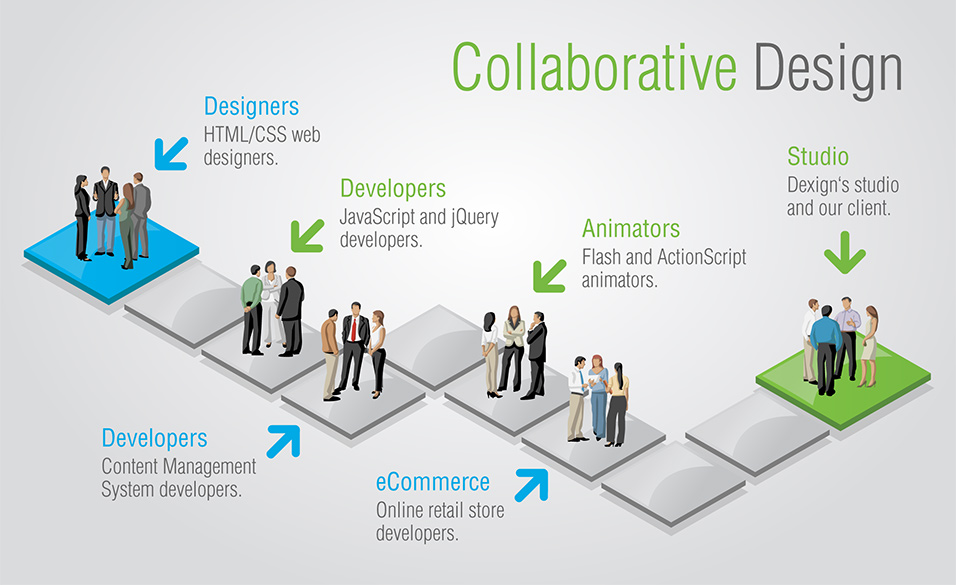
Here at Dexign, and to many of our clients, collaborative design rules! Collaborative design (see FastTrack®) is priced at a fraction of the cost of custom design. It is offered at a low flat rate unlike custom design, which is only offered at a higher hourly rate. That means with custom design, project costs increase the longer it takes. With collaborative design, they don’t. No unpleasant surprises or sticker shock appear along the way.
Deciding if collaborative design is right for you is the first step in getting started. This means recognizing the simple underlying differences between collaborative design and traditional custom design. If you understand and accept the distinctions, collaborative design can offer you a whole new world of high-end design possibilities and amazing value.
Recognizing the sheer value of collaborative design, in both price and quality, requires a paradigm shift. In return, clients enjoy prices at a mere fraction of custom design with no reduction in quality. As a matter of fact, in most cases, quality remains at the highest end. The lone allowance required in choosing collaborative design is something known loosely as global non-exclusivity.
As a practical matter, global non-exclusivity has no ill effect on a local or regional scale. So who, if anyone, should be concerned about it? Only those who are concerned with the impacts of non-exclusivity on a worldwide scale should steer clear of collaborative design—even then, only in pursuit of an exclusivity standard normally sought by large corporations.
If there were three other websites in the entire world that had similar design elements to your site, and you (or your customers) had no chance of ever discovering them, either intentionally or accidentally, would such non-exclusivity concern you? Would it concern you enough to opt out of collaborative design, and 50-75% savings, to preserve this far-reaching measure of exclusivity?
TIP: Branding and images alone make your website unique to you, even before adding any additional content. Consider this when deciding.
If the answer above is NO and you are able to answer NO to each item in the checklist below, then you are an ideal candidate for collaborative design. However, if your answers tend to be YES (two or more below), you may be better suited to custom design, especially if price is not an issue.
At Dexign, we want everyone to understand the distinctions, advantages and parameters of collaborative design. That way, each individual can decide what’s best for themselves by privately answering a few simple and straightforward questions.